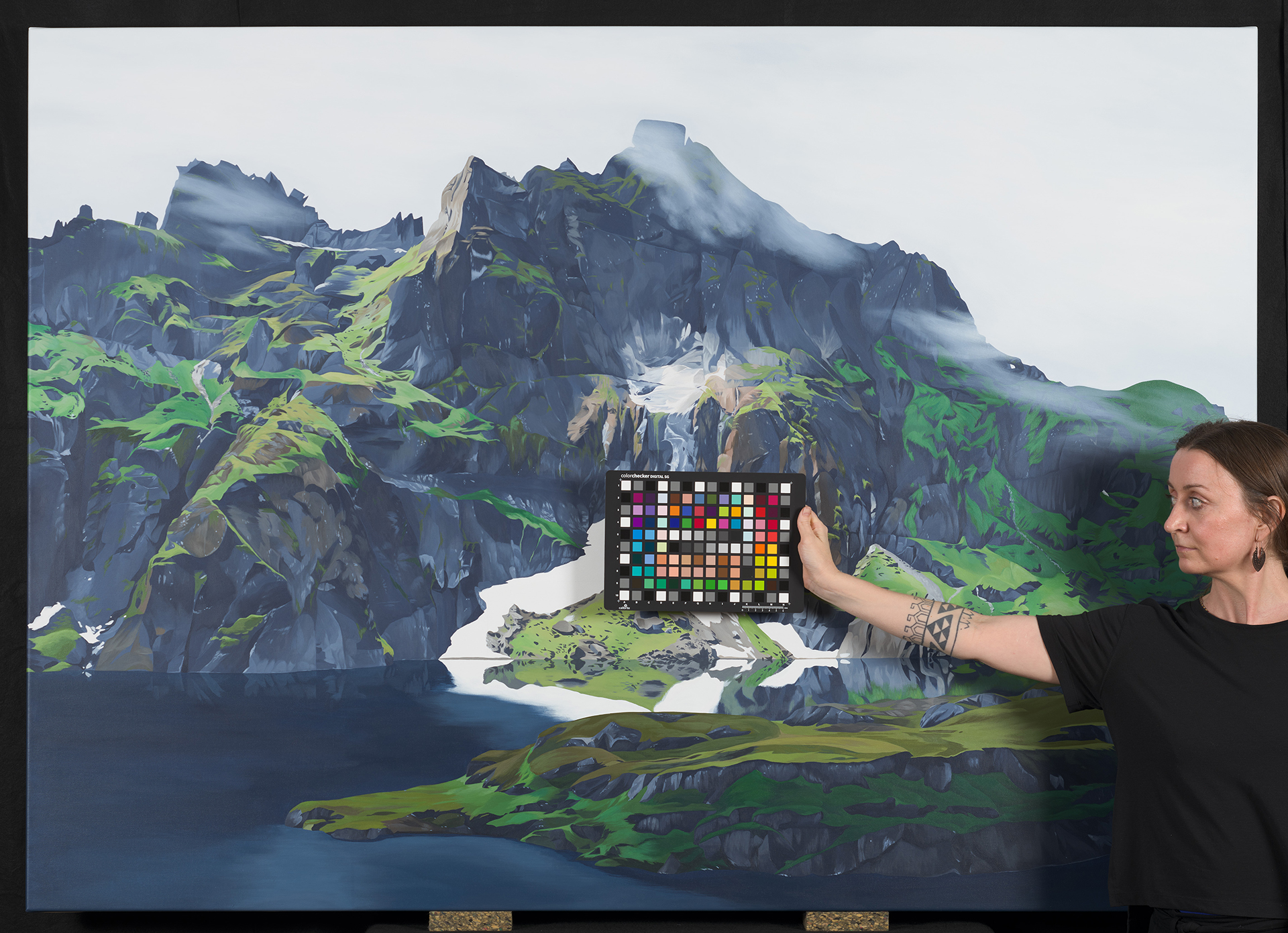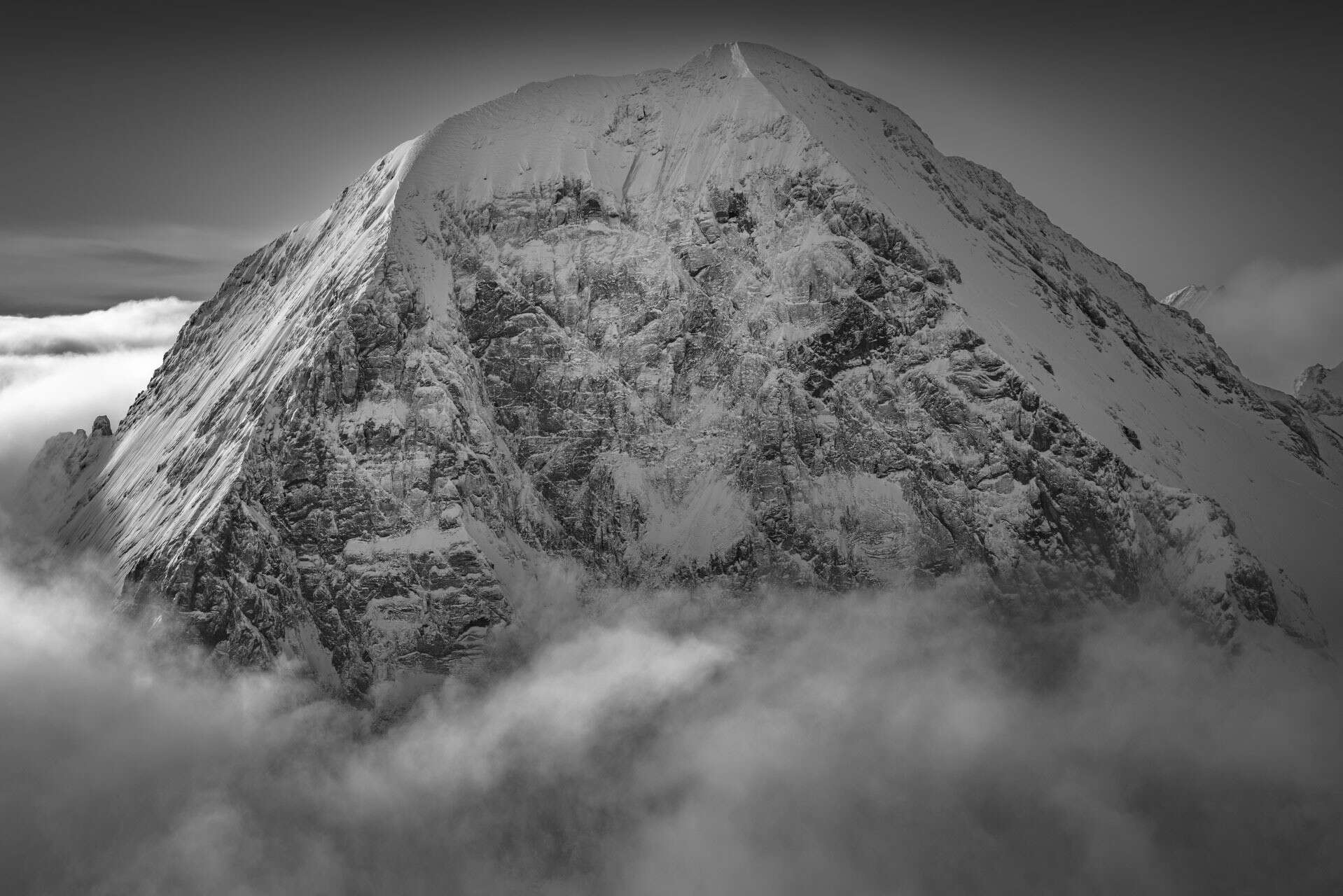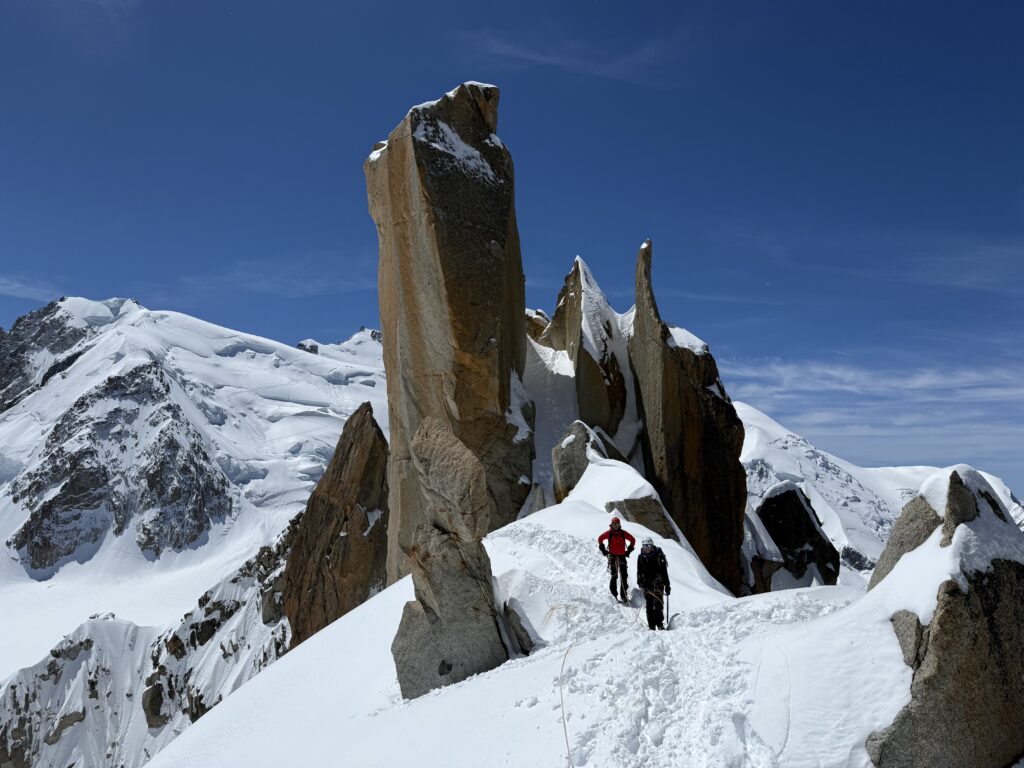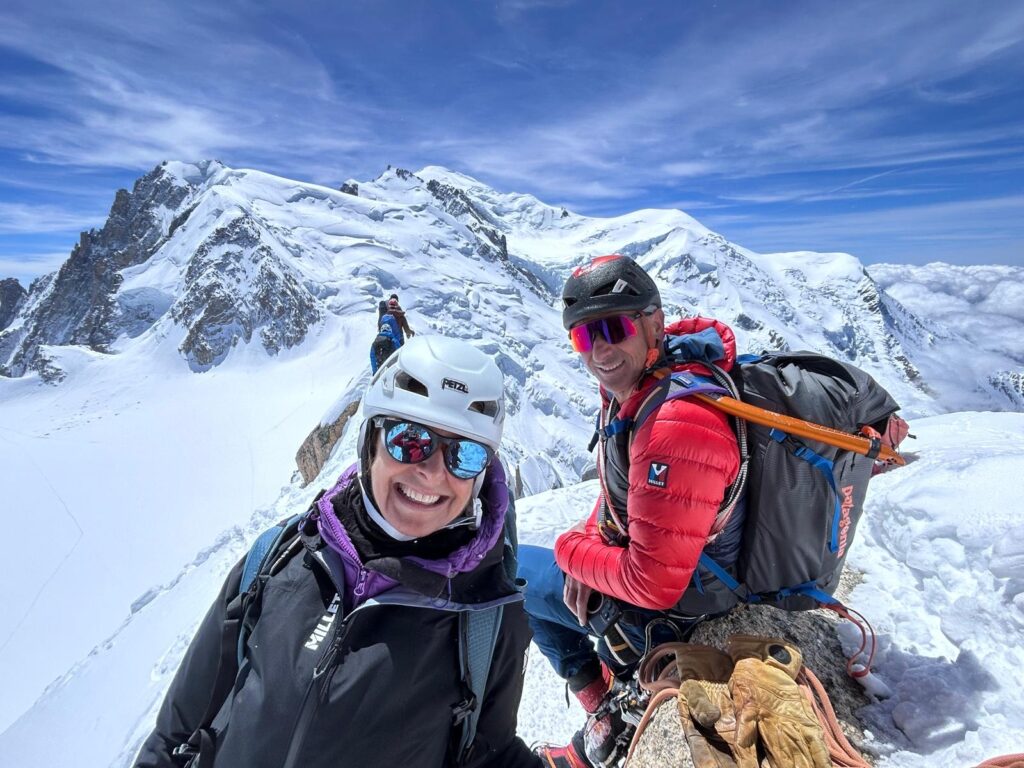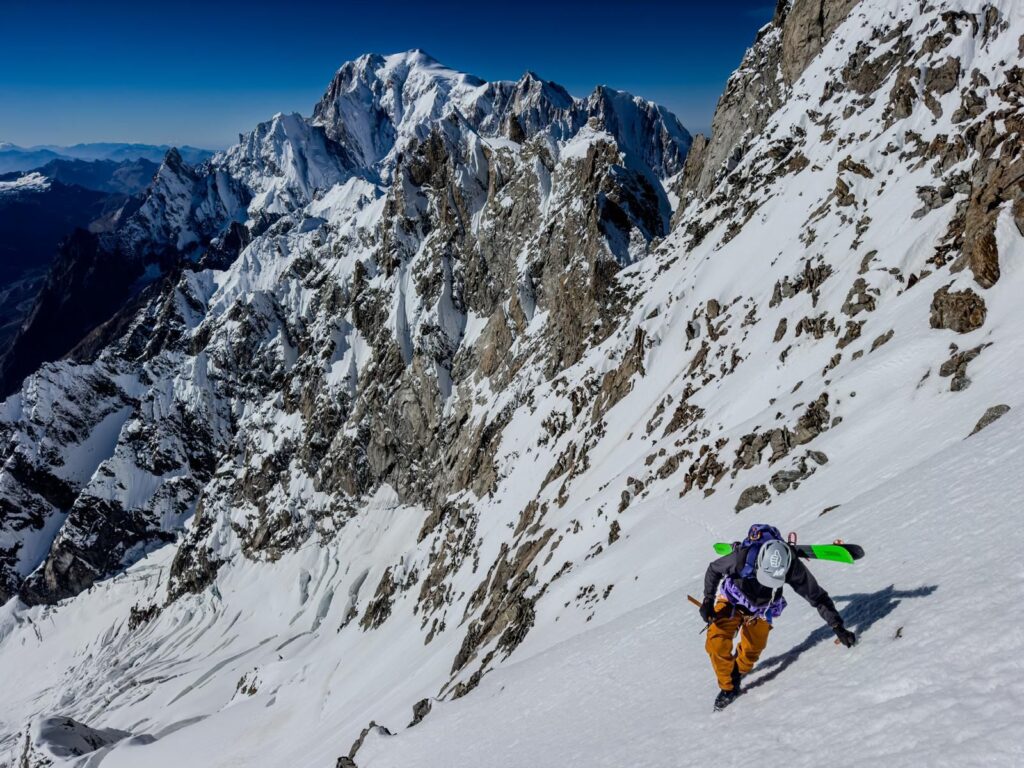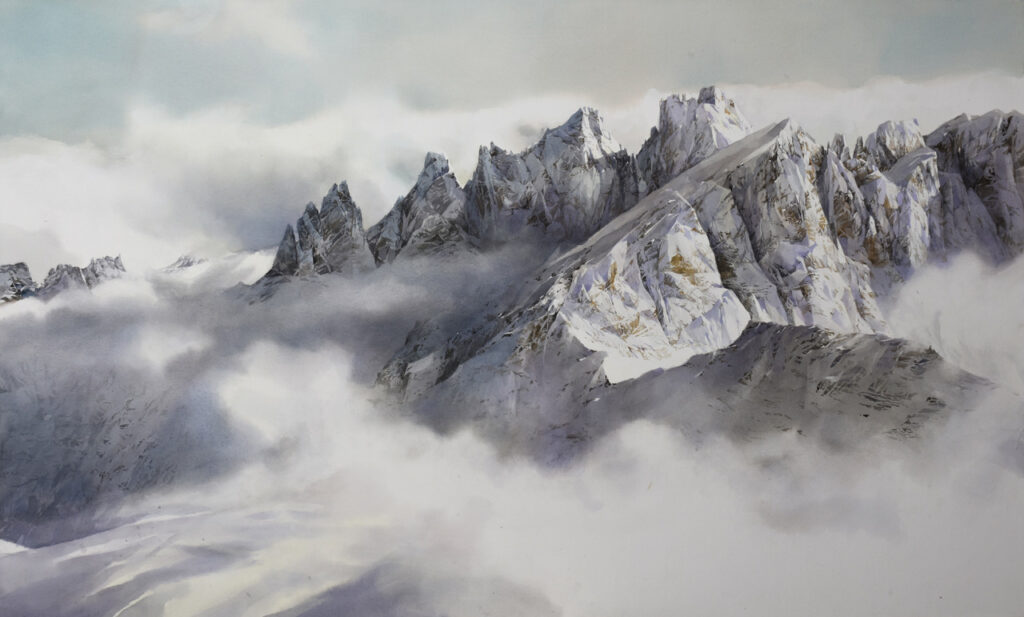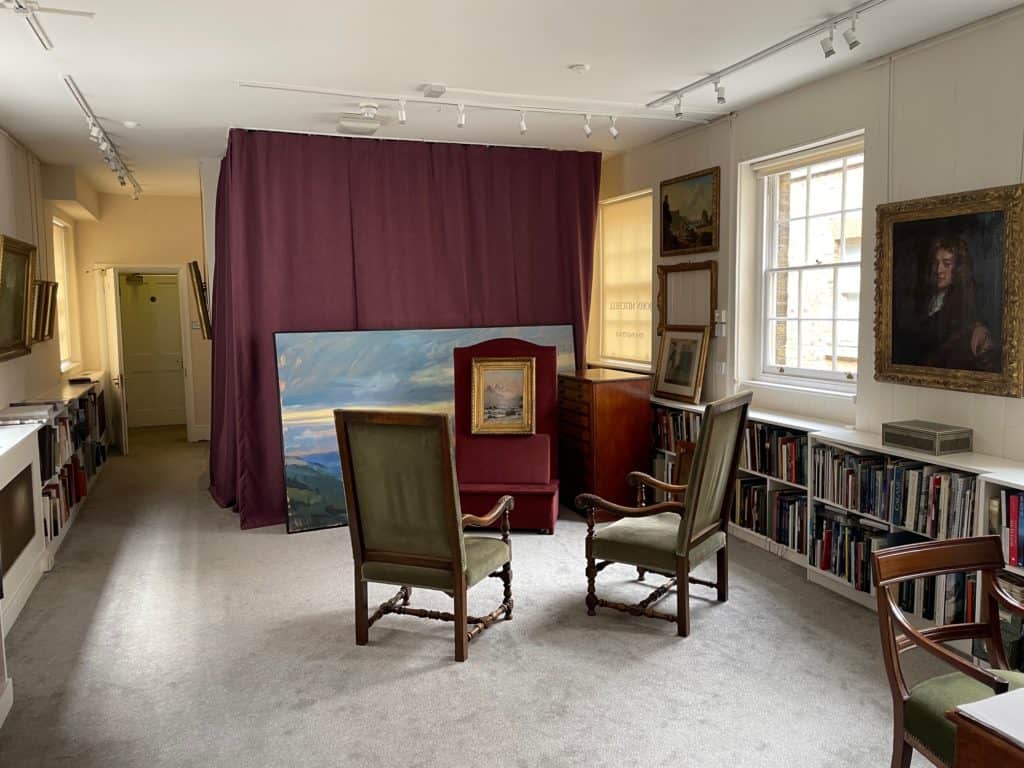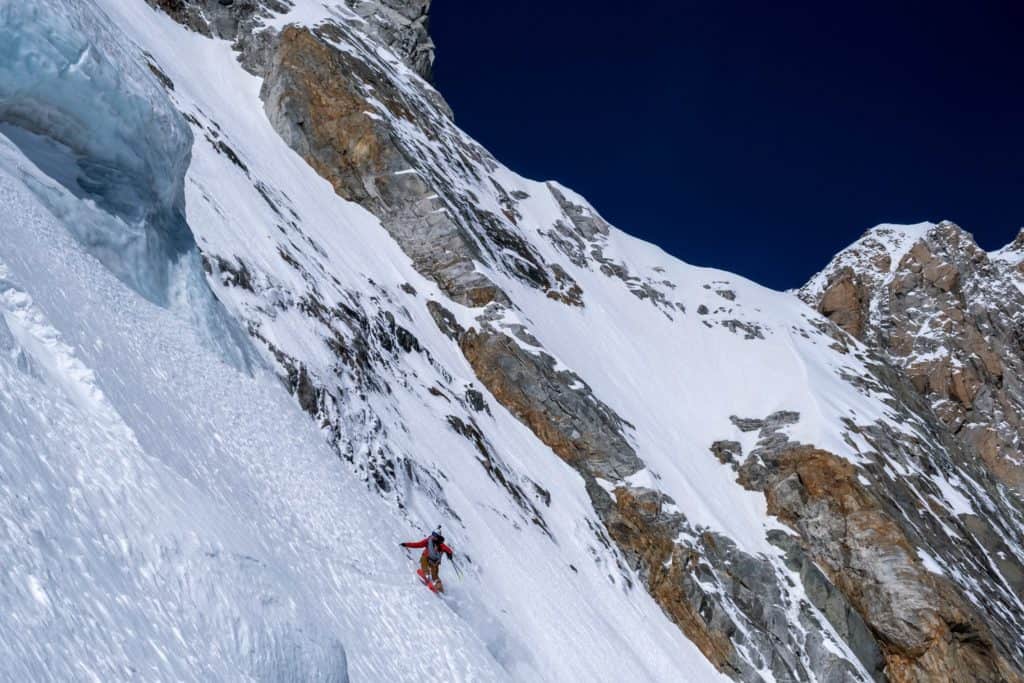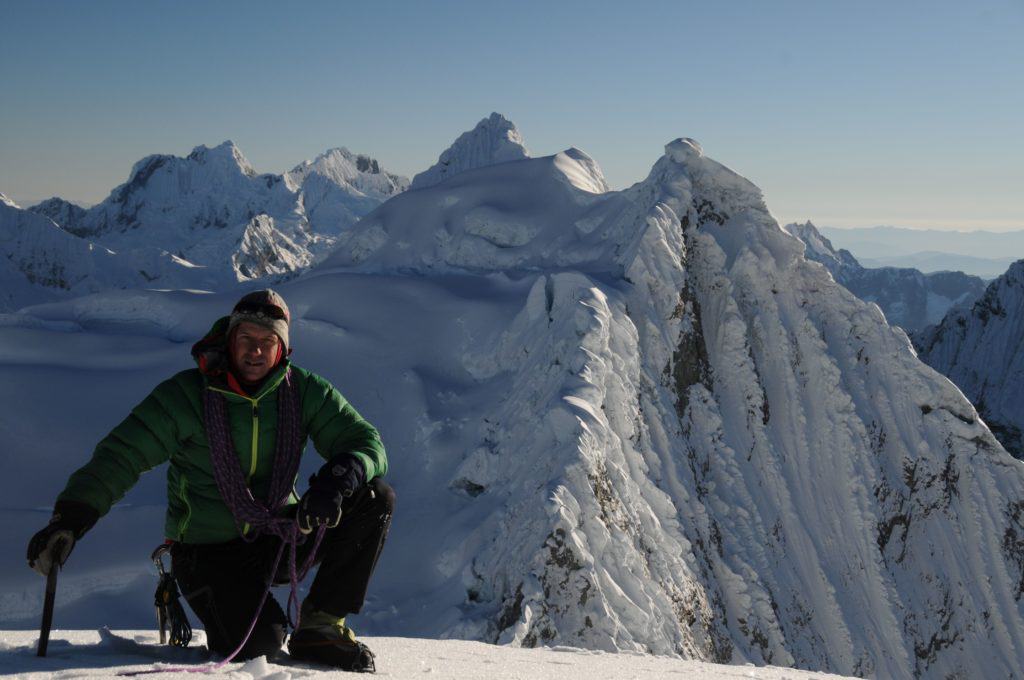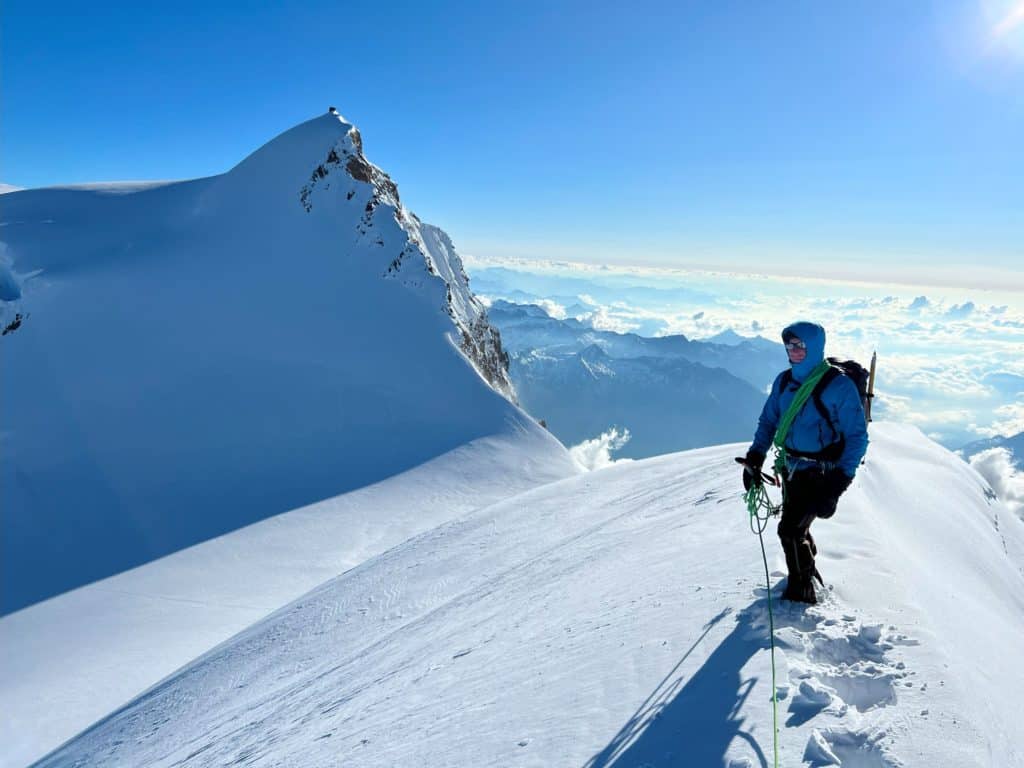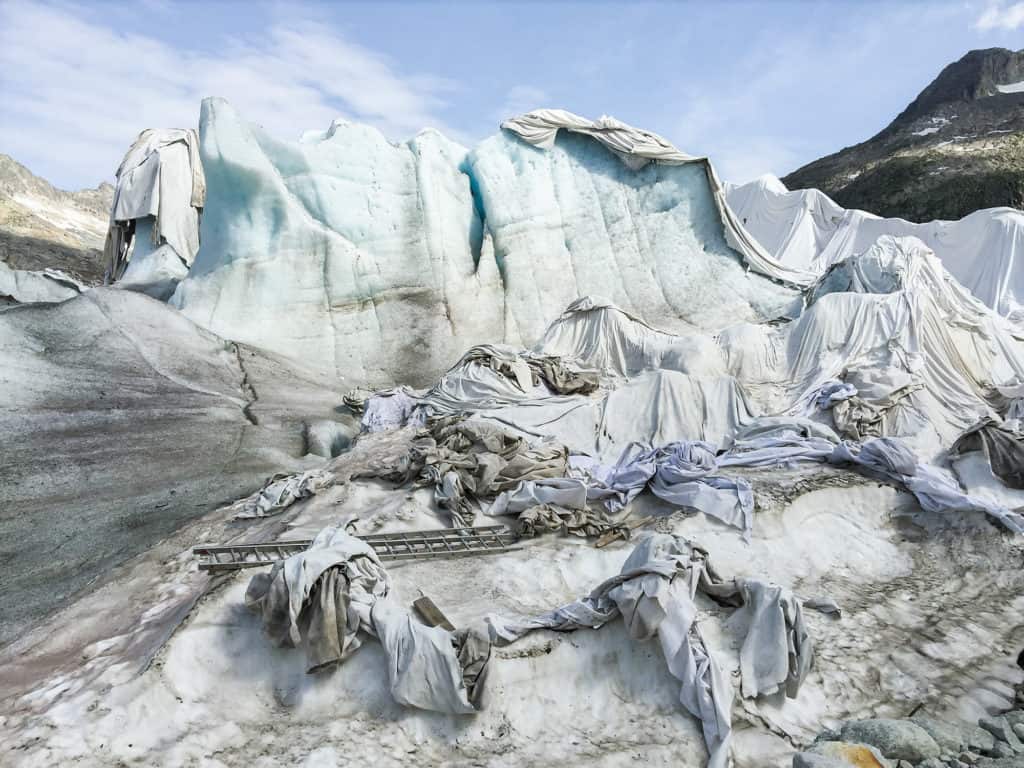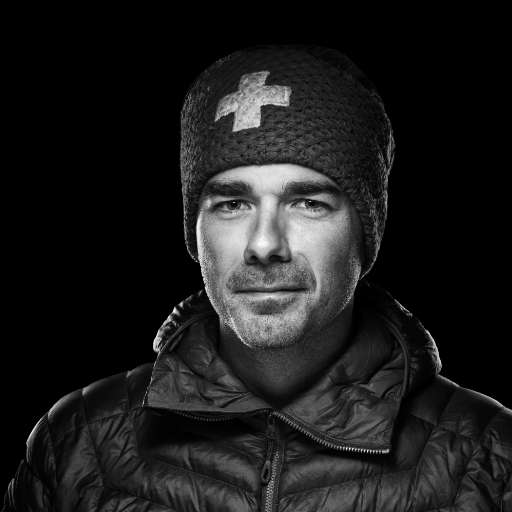I met an artist who sublimates nature through brilliantly colored paintings. Passionate about interculturality, astrophysics and the cosmos, Corinne Weidmann has traced a singular path, from Switzerland to London, via Costa Rica. These sojourns to the four corners of the globe have profoundly nourished her artistic vision. Through her work, she shares her own connection to alpine landscapes and the nature that surrounds her. Today, she opens the doors to her universe: a creative journey rich in influences and emotions. Meet Corinne Weidmann and her world of a thousand colors.
Corinne Weidmann: a career shaped by nature and culture
Hello Corinne. First of all, could you tell us a little about your background? How did you become a painter?
My artistic journey began at a very early age. I already wanted to be an artist when I was in kindergarten, and creativity has always been part of who I am - drawing, painting, making collages. It was always what I liked best.
I followed a classical schooling, then entered the preparatory class at the art school in Basel. I then studied graphic design in Lucerne, where I graduated. After that, I first went to Costa Rica, where I worked in a surf camp. It was there that I began to paint small works on driftwood - it was the start of my career, and it was following this experience that I set up my own business.

Your career is rich and diverse, having taken you through Switzerland, Costa Rica, Berlin and London. How have these cultures influenced your artistic approach?
Living in these countries has had a major influence on my artistic quest. When I lived in Costa Rica, life was simple and deeply connected to nature. We were in an isolated region, on a peninsula along the Pacific coast, surrounded by jungle and ocean. This immersion in nature had a profound effect on me, not only for its beauty, but also for the way I began to approach life itself. Everyday life, the rhythm of a simple life, interaction with the environment - all this is so rich.
After Costa Rica, I spent 6 months on the northwest coast of Canada, then moved straight to London - a complete contrast. A vast European metropolis, London was vibrant and creatively stimulating, but largely disconnected from nature. This succession of environments gave me a broad perspective on how different environments affect people and their lifestyles. These experiences have influenced both my painting and my way of seeing the world.
Corinne Weidmann: an intimate relationship with the Alps
You like to paint Alpine landscapes. Could you describe your personal relationship with the mountains?
I'm originally from Switzerland, a country where around 70% of the territory is mountainous. The Alps are not just a geographical feature of Switzerland, they are deeply rooted in the country's culture. Our country's identity is steeped in mountains, whether in mythology, advertising or other elements.
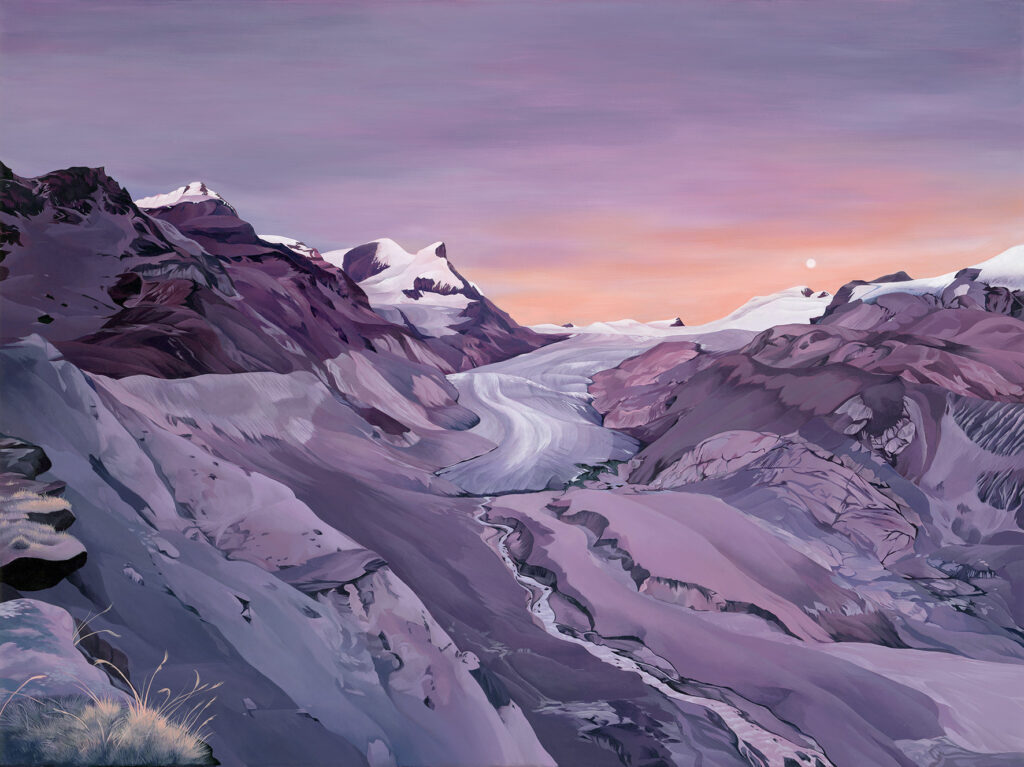
What's interesting is that I only started painting mountains after living abroad. Perhaps it was a form of homesickness, a way of reconnecting with my homeland. For many years, I also worked in the snowboarding world - a good fifteen years - which further deepened my relationship with Alpine landscapes. Over time, my interests evolved. I've become more interested in the scientific and ecological dimensions of mountains - I don't just see them as playgrounds, but also recognize their vulnerability. The effects of climate change, the fragility of glaciers, the evolution of ecosystems - all these things began to influence my work in a more conscious way. For the past ten years or so, I've been painting mountains and glaciers almost exclusively. Quite recently, my artistic vision has evolved. I'm now moving towards more varied landscapes. I want to explore the interconnectedness of different environments and see nature not as separate elements, but as a whole.
Do you have a particular attraction for a specific summit ?
I don't have a specific mountain that I paint more than others. But I do feel a strong connection to the BerneseOberland . Part of my family comes from there and I've spent a lot of time there. I've even lived there. It's in the heart of these mountains that I feel closest.
Corinne Weidmann: color at the heart of her art
Your style is described as "flowery, wild and lively". Can you tell me more about this stylistic choice and what it means to you?
My work is generally very colorful. But I've recently begun to remove color from certain landscapes to explore more abstract compositions. Color has always been a personal preference. I'm drawn to bright tones and complex patterns. In a way, I think I was unconsciously trying to reflect the play of light and shadow in the mountains through these vibrant palettes.
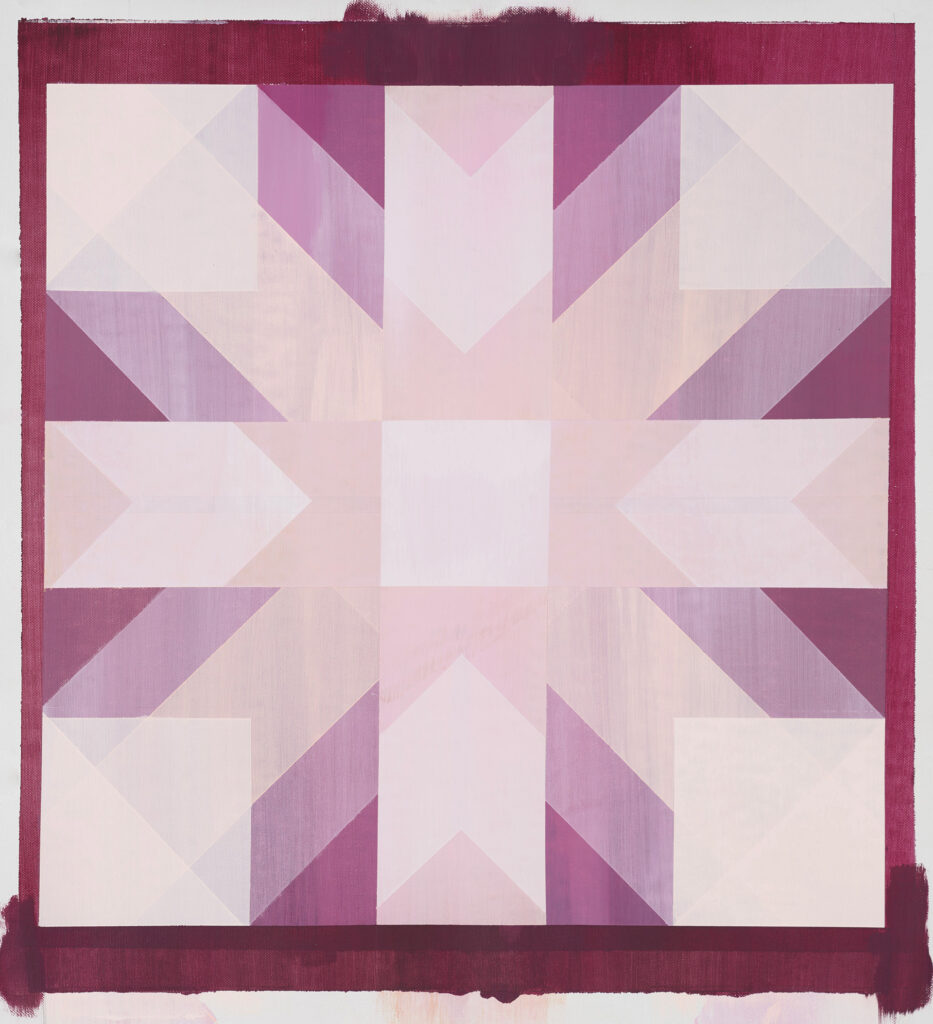
For me, color expresses the character of a place. I don't see landscapes as neutral or monochrome; each landscape seems to have its own personality. Through color, I try to reveal their uniqueness. This is a deeply intuitive process, as I don't follow a fixed plan. Sometimes a place just seems red or orange to me, and I can't imagine painting it in any other hue. The choice of color emerges naturally, as if guided by the landscape itself.
Is there a work of art you've created that holds special meaning for you?
I'd probably choose "Ischmer". This work depicts a glacier, with particular emphasis on its crevasses. What fascinated me about this painting was the sense of ephemerality it exudes. As I immersed myself in the smallest details during the creative process, I was also aware that by the time the painting was finished, the landscape itself would already have changed. Glaciers are in perpetual motion - advancing, melting, transforming. This idea has never left me: that we are trying to capture a precise moment, but that moment, in its exact form, no longer exists. What remains is a trace, a silhouette, but never totally identical to what it was.
Corinne Weidmann: creating together across borders
You often collaborate with artists from different cultural backgrounds, as well as with scientists. What do you retain from this experience?
What I find fascinating about these collaborations is that they bring together people from very different backgrounds - not only indigenous artists, but also individuals with radically diverse worldviews and cultural perspectives. Coming together to create is rich in itself, but beyond the artistic act, it's the dialogue that really counts. Through these exchanges, we learn to see through each other's eyes, and little by little, we discover a common ground - a meeting point that becomes the foundation of shared creation.
For example, I collaborated with a friend, James Johnson, originally from Alaska and a member of the Tlingit Nation. I had painted a landscape of the Bernina mountain range - a remote region well known to mountaineers. On this painting of a Swiss landscape, James applied Tlingit symbols and visual motifs. It was almost as if his culture met mine - a poetic encounter between two continents.
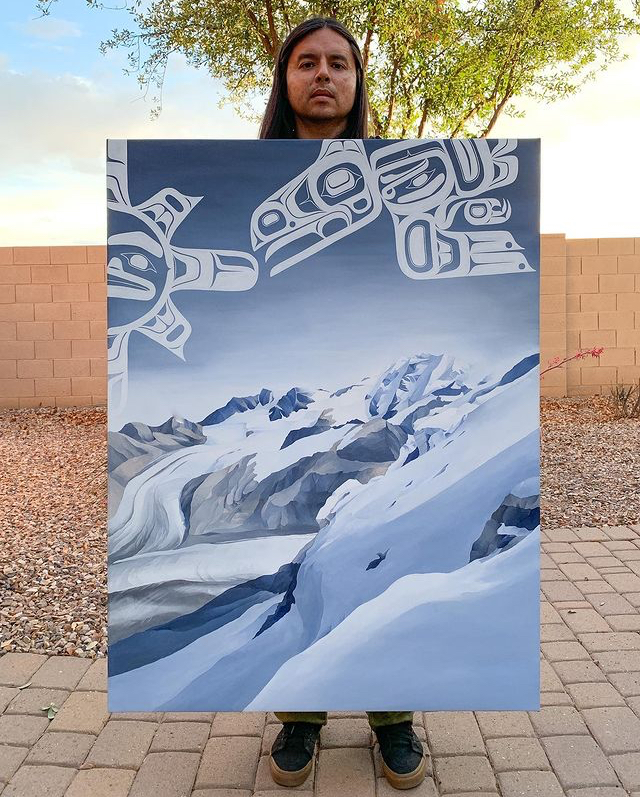
Throughout this process, we exchanged profound views on cosmology, cultural heritages and our respective worldviews. For me, this kind of collaboration goes far beyond the work produced: it's a dialogue that takes place on many levels - artistic, intellectual, but also deeply human.
Corinne Weidmann: between tradition and cosmic visions
You mention that your Swiss roots and traditional folk art deeply influence your style. How does this tradition manifest itself in your contemporary work?
Traditional Swiss art doesn't directly influence my mountain paintings, but I've always been drawn to floral and geometric motifs. These ornaments are deeply rooted in Swiss folklore and Alpine visual culture - they can be found on wardrobes, house facades, kitchen boards, or carved into wooden objects. Similar styles can be found all over Europe, particularly in France.
My interest in this folk art was truly awakened through my collaborations with native artists and friends from other cultures. These encounters prompted me to reflect on my own heritage. I realized that, while Swiss folk art may not convey religious or cosmological meaning in the same way as other traditions, it is nonetheless a form of cultural expression in its own right - a visual language rooted in everyday life.
Since then, my curiosity for this world has continued to grow. I'm still exploring, but I'd like to find a way of integrating these traditional elements into a contemporary artistic approach - reinterpreting them through a modern prism, while retaining their deep connection to the land and tradition.
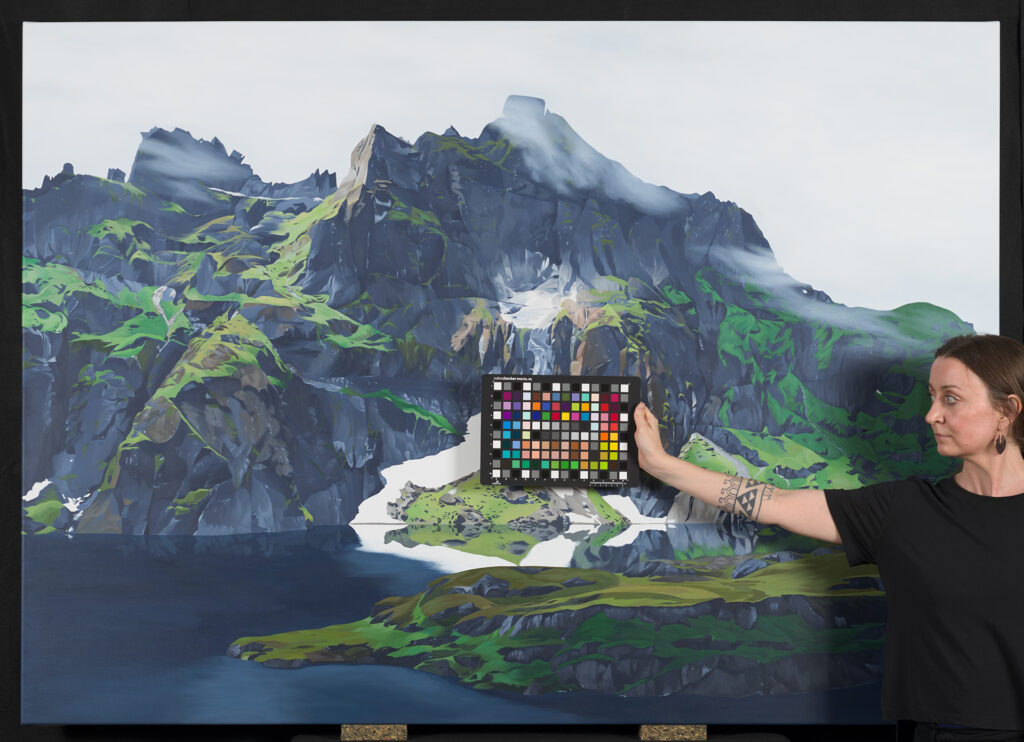
Does your interest in astrophysics and the cosmos also fuel your creativity? How do you integrate these themes into your artistic practice?
Yes, it definitely feeds my creativity. When I lived in England, I studied metaphysics at the University of London. In particular, I worked with the astrophysicist Manuel Calderón de la Barca. This opened my eyes to a radically different vision of the world. For example, what we perceive as a solid landscape is really just a dynamic arrangement of particles. Solidity is merely an illusion shaped by our perception.
Exploring these concepts leads me to think differently. They encourage me to approach familiar subjects - such as landscapes - from a new angle, and to wonder about the invisible layers of reality that unfold beneath the surface of the visible.
Corinne Weidmann: art as a reminder, life as a commitment
You are an artist with a strong commitment to climate protection. How does your art concretely contribute to raising awareness of environmental issues?
In fact, my main commitment is not directly through my art. Art alone cannot solve problems - it remains a visual interpretation, a way of celebrating the beauty of the landscape. Perhaps it acts as a reminder, a silent alert to the possible loss of this beauty.
But beyond artistic expression, my commitment is more personal and concrete. I try to live in accordance with my ecological convictions: I take public transport, I avoid flying, and I strive on a daily basis to reduce my environmental impact.
As for my art, I haven't yet figured out how to integrate it into a form of activism that could really generate change. It may act as a discreet reminder - but I'm clear: on its own, it's not enough to change the course of things.
How would you like your viewers to feel or think when they stand in front of your work?
I don't know if it's really an emotion, but what I often feel is a deep sense of belonging to nature. A calm, grounded presence - the feeling of being part of something larger than oneself.
When I'm in nature, I realize just how much it nourishes a sense of fulfillment. And in this state, you stop desiring superfluous things. You're no longer drawn to distractions or desires that, in the end, aren't that important. There's a kind of simplicity in this connection - and a certain clarity. It's this feeling that I try to convey through my art.
Corinne Weidmann's vibrant, colorful paintings reveal landscapes imbued with emotion. From Switzerland to Costa Rica, her intercultural journey has profoundly shaped her artistic vision. Her creative quest transcends borders, drawing on the richness of the worlds she has crossed. I invite you to contemplate the timeless beauty of nature through the work of Corinne Weidmann.
Discover all Corinne Weidmann's works